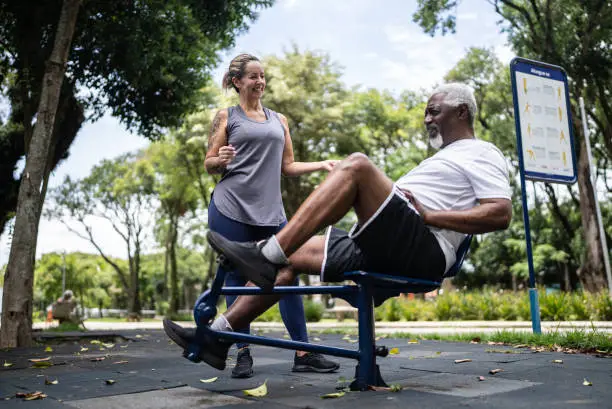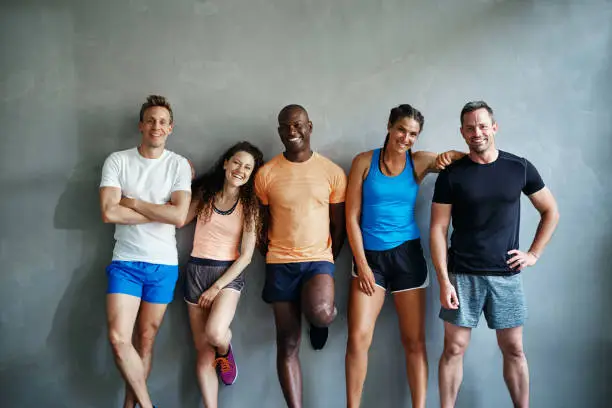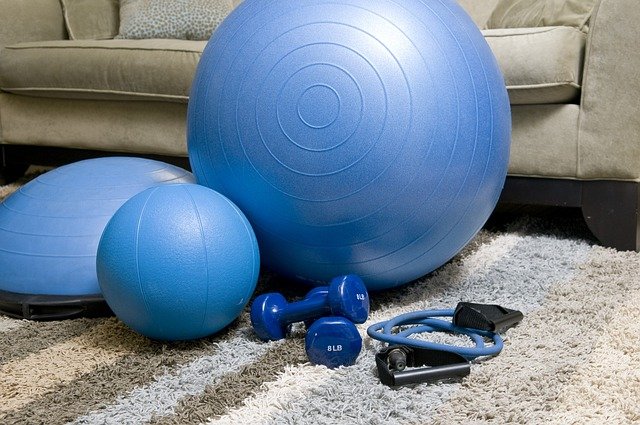We envision a world where everyone has the tools and knowledge to live a balanced, healthy, and fulfilling life. By providing reliable resources, personalized programs, and community support, we aim to be a beacon of hope for those on their health journey.
Table of Contents
Introduction to Fitness Without a Gym

How to Become Fit Without Gym
In recent years, the concept of achieving fitness without a gym has gained considerable traction. With the rise of technology and a wealth of resources available on the internet, many individuals have turned to home workouts and outdoor activities as effective alternatives to traditional gym environments. This shift not only makes fitness accessible to a broader audience but also provides opportunities for diverse and personalized workout experiences.
Home workouts offer a unique advantage; they eliminate several barriers associated with gym attendance, such as travel time, membership fees, and crowded spaces. learn Exercise Plan to Lose Weight: How to be Lose 10 Pounds in a Month People can design their fitness routines according to their personal preferences and schedules, allowing for greater flexibility and consistency. Whether utilizing body-weight exercises, resistance bands, or simple household items as makeshift weights, individuals can effectively engage in a wide variety of training methods within the comfort of their own homes.
Additionally, outdoor activities have emerged as a popular choice for those seeking to enhance their physical well-being. Parks, trails, and community spaces provide ample opportunity for engaging in exercises such as running, cycling, or group classes that incorporate natural settings. These activities not only improve fitness levels but also contribute positively to mental health, as they allow individuals to connect with nature and enjoy fresh air.
The growing trend of fitness without a gym has sparked a movement towards a more inclusive definition of health and wellness. It highlights that physical fitness is not confined to specific locations or equipment; rather, it can be a versatile journey tailored to individual needs and environments. The freedom and accessibility of working out outside the gym encourage everyone to embark on their personal fitness journeys, making it a viable option for those willing to invest time and effort into their health.
Understanding the Importance of Fitness
Maintaining physical fitness is crucial for a variety of reasons, which goes beyond merely shaping one’s appearance. Regular engagement in fitness activities plays a significant role in upholding overall physical health. It bolsters the immune system, reducing the risk of chronic diseases such as diabetes, heart disease, and obesity. Additionally, it aids in managing weight by increasing metabolism and promoting healthy digestion. Thus, fitness should be recognized as an essential component of a healthy lifestyle.
Furthermore, physical fitness is linked to enhanced mental well-being. Exercise triggers the release of endorphins, commonly known as feel-good hormones. This natural response can alleviate symptoms of anxiety and depression while simultaneously promoting feelings of happiness and tranquility. Engaging in regular physical activity can also boost self-esteem and confidence, resulting in improved social interactions and a more positive self-image. Hence, the realm of fitness significantly contributes to one’s mental health as well.
Increased energy levels are another benefit closely associated with fitness. Participants often report enhanced endurance and stamina, enabling them to accomplish daily tasks more efficiently. This heightened vitality allows individuals to engage in a healthier lifestyle, including participating in recreational activities or spending quality time with family and friends. Such social interactions not only strengthen relationships but also provide additional motivation to remain active, creating a beneficial cycle that fosters well-being.
Ultimately, fitness serves as a cornerstone for a better quality of life and increased longevity. Those who prioritize their physical health often enjoy greater mobility and independence as they age. This commitment to fitness can lead to a fulfilling and enriching life free of the constraints imposed by preventable medical conditions. Therefore, understanding the importance of fitness is essential for any individual seeking to enhance their overall well-being and life satisfaction.
Setting Realistic Fitness Goals

Establishing clear and attainable fitness goals is paramount for anyone seeking to enhance their physical well-being without the confines of a gym. As individuals embark on their fitness journey, setting realistic objectives not only provides direction but also fosters motivation and accountability. The process of defining these goals hinges on several essential components: specificity, measurability, achievability, relevance, and time-bound criteria—collectively known as the SMART framework.
First, specificity involves articulating precise fitness ambitions. Instead of a vague goal like “I want to get fit,” a more defined objective such as “I aim to lose 10 pounds in three months” offers clarity and a concrete target. This clarity helps to focus efforts and resources on the necessary actions to achieve the desired outcome.
Next, the measurability of goals is equally crucial. Individuals should ensure they can track their progress quantitatively or qualitatively. For instance, rather than targeting an undefined improvement in endurance, a goal could specify “I will run 5 kilometers in under 30 minutes.” Measurable goals facilitate regular assessments and adjustments to one’s fitness regimen.
Furthermore, the achievability of fitness goals cannot be overlooked. Setting overly ambitious goals can lead to frustration and discouragement. Therefore, it is vital to evaluate one’s current fitness level and craft realistic milestones that underscore incremental progress. This approach promotes a sense of accomplishment as individuals work toward their fitness ambitions.
Additionally, goals must remain relevant to one’s personal circumstances and lifestyle. What may be an appropriate goal for one person could be unrealistic for another based on various factors, including age, physical condition, and available resources. Finally, establishing a time frame for these goals prompts individuals to maintain focus and urgency, leading to consistent engagement in their fitness pursuits.
By adhering to these guidelines, individuals can set realistic fitness goals that inspire and sustain them on their journey toward improved health and well-being without a gym environment.
Creating a Home Workout Routine
Establishing an effective home workout routine is a rewarding endeavor that requires careful planning and an understanding of available resources. One of the most significant advantages of working out at home is the flexibility it offers, allowing individuals to customize their routines based on personal preferences, fitness levels, and available equipment. Bodyweight exercises, resistance bands, and common household items can be utilized to create a varied and engaging workout plan.
Begin by considering your fitness goals; whether you aim to build strength, improve endurance, or increase flexibility, distinguishing these objectives is crucial. For strength training, exercises such as push-ups, squats, and lunges can be performed with just your body weight. To add resistance, consider incorporating resistance bands, which can effectively target various muscle groups and enhance workout intensity. For example, banded squats and rows can offer additional challenges that gradually lead to stronger muscles.
Next, structure your workouts to maintain a balanced routine that touches upon all major muscle groups. A sample structure might consist of a warm-up, followed by alternating upper and lower body exercises, and concluding with core strengthening movements. Aim for at least three to four workouts per week, varying the exercises to stave off boredom and to continuously challenge your body. Incorporation of different exercise modalities, such as yoga or high-intensity interval training (HIIT), can also provide variety while targeting diverse fitness areas.
Additionally, to keep the routine fresh and engaging, set specific days to focus on certain types of workouts, like ‘Mobility Mondays’ or ‘Full-Body Fridays.’ Create a workout calendar to track your progress and celebrate small victories to maintain motivation. By thoughtfully combining exercises and regularly refreshing your routine, you can achieve significant fitness improvements without ever setting foot in a gym.
Utilizing Outdoor Spaces for Fitness

In recent years, outdoor fitness has gained popularity as an effective means of staying fit without the constraints of a gym environment. Engaging in activities such as running, hiking, cycling, and calisthenics in open spaces provides a multitude of benefits, both physically and mentally. The fresh air and natural scenery can enhance motivation and elevate your mood, making workouts more enjoyable and less routine.
One of the most accessible outdoor activities is running. Many cities and towns feature scenic parks, trails, or waterfront paths that promote running while allowing individuals to connect with nature. To maximize your running experience, consider exploring different routes and terrains, which can help to keep your workouts fresh and challenging. Additionally, varying your pace with interval training can effectively boost your endurance.
Hiking is another excellent outdoor activity that encourages fitness while providing an immersive experience in nature. Local hiking trails offer opportunities to engage in cardiovascular exercise while effectively building strength and balance, especially when navigating uneven terrain. Researching nearby hiking locations can enhance your fitness journey and introduce you to new landscapes to explore.
Cycling, whether on roads or dedicated paths, presents an exhilarating way to maintain cardiovascular health. Many communities have cycling clubs or groups that encourage social interactions while promoting fitness. When cycling outdoors, ensure that you adhere to safety protocols, such as wearing a helmet and staying visible to drivers.
Calisthenics is a versatile method of strength training that can be performed in parks or open areas. Utilizing benches, bars, or even the ground, individuals can perform various exercises like push-ups, pull-ups, and squats, making it an effective and adaptable option for all fitness levels. Seek out parks with fitness equipment or open spaces that facilitate these exercises, thereby enhancing your regimen. Embracing these outdoor activities can significantly contribute to your overall fitness, fostering not only physical health but also a deeper connection with the environment.
Incorporating Flexibility and Mobility Work
Flexibility and mobility are integral components of a well-rounded fitness regimen, playing a crucial role in enhancing overall physical performance and preventing injuries. Unlike strength training or aerobic exercises, flexibility focuses on the range of motion in joints and muscles, while mobility incorporates the ability to move freely and easily. Both elements contribute to improved posture, balance, and coordination, which are essential for effective body movement.
Incorporating flexibility into your workout routine can be achieved through various stretching techniques. Dynamic stretching is particularly beneficial as a warm-up, helping to prepare muscles for physical activity. This involves controlled movements that gently engage your muscles and increase blood flow. On the other hand, static stretching, which is performed by holding a stretch for a period, is best utilized post-workout to aid recovery and enhance muscle flexibility. Targeting key muscle groups such as the hamstrings, quadriceps, shoulders, and back can significantly improve your overall flexibility, leading to better performance in daily activities and exercises.
Yoga practices encompass both flexibility and mobility work, making it an exceptional method for individuals looking to improve their fitness at home. Through various poses, yoga not only stretches muscles but also challenges balance and stability, promoting a full range of motion. Furthermore, incorporating yoga into your routine can be a meditative experience, reducing stress and enhancing mental clarity. Joining online classes or following guided sessions can assist individuals in learning and executing various poses correctly, ensuring safety and efficacy.
In summary, committing to flexibility and mobility work should be viewed as a necessity rather than an option for anyone aiming to become fit without a gym. By integrating effective stretching routines and yoga practices, one can enjoy significant benefits that encompass both physical and mental health, while also minimizing the risk of injury during other forms of exercise.
Nutrition and Hydration for Fitness

Nutrition is a cornerstone of any fitness journey, significantly impacting physical performance and overall health. A balanced diet not only fuels the body but also aids in recovery and enhances the efficiency of workouts. To optimize fitness levels without a gym, individuals should focus on incorporating a variety of nutrient-dense foods into their diets. This means prioritizing fruits, vegetables, whole grains, lean proteins, and healthy fats. Each of these food groups provides essential vitamins, minerals, and macronutrients necessary for energy production and muscle repair.
Meal prepping is an effective strategy for maintaining a healthy diet, especially for those with busy schedules. By planning and preparing meals in advance, individuals can ensure they have balanced, nutritious options readily available. This practice helps in avoiding unhealthy eating habits that may arise from impulse snacking or convenience eating. When meal prepping, it is advisable to focus on portion control and include a colorful array of foods to cover the spectrum of nutritional needs.
Furthermore, hydration is an often overlooked aspect of fitness. Adequate fluid intake is crucial for optimal physiological function, especially during exercise. Water supports digestion, nutrient absorption, and temperature regulation. Consequently, individuals should prioritize staying hydrated throughout the day, not just during workouts. It is generally recommended to drink water before, during, and after physical activity to maintain hydration levels. Including electrolyte-rich beverages or hydrating foods, such as cucumbers and watermelon, may also be beneficial, especially after intense workout sessions or during hot weather.
In conclusion, focusing on nutrition and hydration can significantly enhance fitness outcomes without the need for a gym. By adopting balanced eating habits, practicing meal prep, and prioritizing hydration, individuals can support their workout efforts and promote a healthier lifestyle overall.
Staying Motivated and Accountable
Maintaining motivation and accountability during your fitness journey outside of a gym can be challenging. However, with the right strategies and tools, you can create an effective framework to keep yourself on track. One of the most important aspects is to set clear and achievable goals. These goals serve as a roadmap for your fitness journey. Establish short-term and long-term objectives, and ensure they are specific, measurable, attainable, relevant, and time-bound (SMART). By setting these types of goals, you can monitor your progress effectively and celebrate small victories along the way.
Tracking your progress is another vital component of staying motivated. There are numerous fitness apps available that can help you log workouts, track nutrition, and monitor personal achievements. By consistently recording your activities, you can visualize your progress and appreciate how far you’ve come. Additionally, establishing a routine can promote consistency while reinforcing your commitment to fitness.
A great way to enhance accountability is to involve friends or family in your fitness journey. You can set up workout challenges and encourage each other to stick to your exercise schedules. This social element not only fosters motivation but also makes the experience enjoyable. Group challenges can create a sense of camaraderie, which can be particularly beneficial when you face obstacles or self-doubt.
Integrating online communities into your routine can also provide motivation. Joining forums, social media groups, or online fitness programs connects you with like-minded individuals who share similar goals. Engaging with these communities allows for sharing experiences, advice, and support, which can significantly enhance your accountability and motivation while exercising outside of a traditional gym environment.
Conclusion: Embracing a Fitness Lifestyle Without a Gym

As we explore the components of maintaining a fit and healthy lifestyle devoid of traditional gym facilities, it becomes clear that achieving fitness is more than just making regular visits to a gym. The strategies outlined in this guide emphasize a holistic approach to fit-ness that can seamlessly integrate into daily life. From utilizing outdoor spaces for exercise to leveraging home-based workouts, individual motivation and creativity play significant roles in this journey.
Engaging in various forms of physical activity, such as jogging, cycling, or bodyweight exercises, offers both flexibility and the opportunity to enjoy the natural environment. Additionally, incorporating functional movements into everyday tasks can significantly contribute to one’s overall fitness level. It’s essential to recognize that maintaining a sustainable fit-ness lifestyle does not solely rely on structured workout routines. Instead, it encompasses a variety of activities that also promote enjoyment and well-being.
Moreover, adopting a balanced diet tailored to individual needs enhances the benefits of physical activity. Meal prepping and exploring nutritious recipes can transform healthy eating into a fulfilling experience, further reinforcing one’s commitment to fitness. Furthermore, setting achievable goals can provide motivation and increase accountability, making the journey more rewarding.
Ultimately, embracing a fit-ness lifestyle outside of the gym is not only feasible, but it can also be enriching and enjoyable. By prioritizing movement and making conscious choices about nutrition, individuals can cultivate lasting habits that contribute to both physical and mental health. With this comprehensive understanding of fitness, it’s time to move forward and explore the infinite possibilities that await in the pursuit of a healthier life without the constraints of traditional gym settings.








